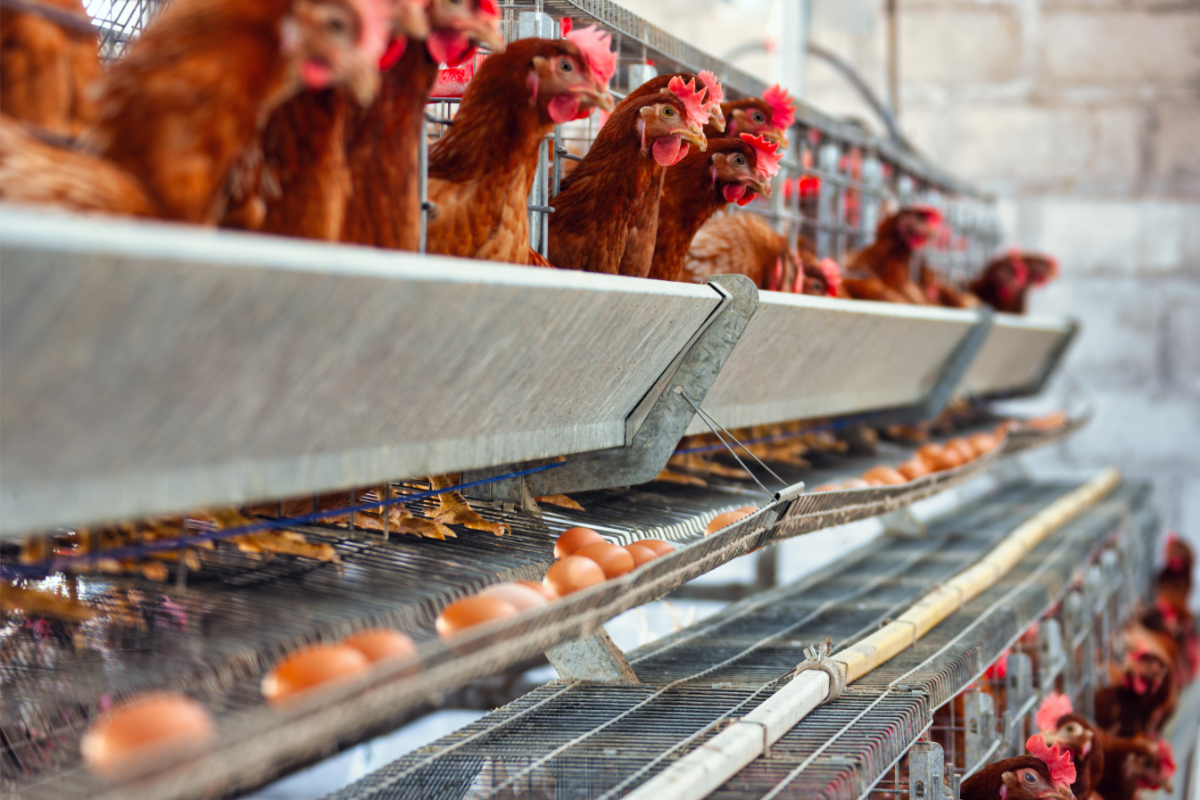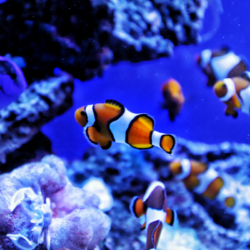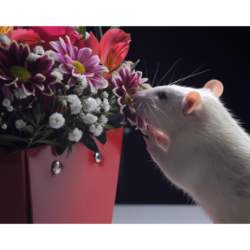Avian influenza, also known as bird flu, is an infectious viral disease that mainly affects birds, but can also be transmitted to humans and other mammals. The disease poses a significant risk to public health and the poultry industry, due to its highly contagious nature and ability to mutate rapidly.
What is the infectious agent?
Avian influenza is caused by the Influenzavirus type A of the Orthomyxoviridae family. It is a fearsome viral disease that is rampant in birds, with alarming mortality rates in farmed birds. Although most avian strains are not transmissible to humans, some variants, such as the H5N1 virus, have crossed the species barrier. This creates the potential for a fearsome pandemic.
To date, the virus is essentially transmitted from animals to humans. However, health experts fear that the virus could mutate into a form that could be transmitted from human to human. This would pave the way for a devastating global spread.
Influenzavirus type A comes in various subtypes, including H5, H7 and H9. It can infect almost any species of bird, wild or domestic. The symptoms of avian influenza vary in birds, ranging from mild to severe and even fatal.
The H5N1 and H7N9 strains in particular have attracted particular attention because of their danger to humans, with high mortality rates. These viruses are classified according to their surface protein combinations, with a potential capacity to infect humans.
While type B and C viruses only affect humans, type A viruses can infect both humans and several animal species. These viruses have specific structures, such as haemagglutinin and neuraminidase. These influence their ability to bind to and release from host cells.
Faced with this persistent threat, surveillance and prevention are crucial to controlling the spread of avian influenza and protecting public health worldwide.
What are the symptoms in animals?
Avian influenza is a threat to a wide range of species, mainly domestic and wild birds such as aquatic and ornamental birds. Occasionally, aquatic mammals such as seals and whales, as well as land mammals such as pigs, horses, mink and even cats, can also be infected.
Symptoms vary according to the virulence of the viral strains. Most infections are caused by low pathogenic viruses. However, certain strains, such as the fearsome H5N1, can cause massive mortality in birds.
In wildlife, a limited proportion of birds can carry the virus without showing signs of illness. This facilitates long-distance spread. Wild birds, particularly those infected with the H5N1 virus, can suffer significant mortality.
In poultry farms, avian influenza manifests itself in the form of respiratory illnesses and sudden drops in egg production. Highly pathogenic forms present more serious symptoms, with nervous and/or digestive signs. These forms can lead to rapid mortality, sometimes reaching 100% in just 48 to 72 hours.
Symptoms, although not very specific, include altered behaviour in poultry such as :
- chilliness
- depression
- respiratory problems such as coughing and rales
- loss of productivity in layers.
Low pathogenic strains cause mortality rates of up to 3%. Highly pathogenic strains can cause much greater losses. In fact, they can reach 100% of flocks in just a few days.
How is the disease transmitted?
The spread of avian influenza is based on different modes of transmission, depending on the species affected. In wild birds, contamination is mainly digestive, via aquatic environments contaminated by infected droppings. These droppings can remain contagious for several months. Cases of respiratory transmission have also been observed, particularly for the H5N1 virus.
In livestock and ornamental farms, transmission occurs from animal to animal via the respiratory, ocular and digestive tracts, mainly through coughing, sneezing, droppings and infected aerosols. In humans, transmission is rare but possible through frequent and prolonged contact with infected birds. Fine dust contaminated by bird droppings or respiratory secretions is the main vector. They mainly affect the respiratory and ocular tracts.
The United Nations Food and Agriculture Organisation has identified several ways in which wildlife can be contaminated. It distinguishes between contamination by infected material, contaminated excrement, and the presence of birds or relay species likely to carry the virus. To become a human pandemic, the virus must mutate, often passing through a more similar intermediate host, such as pigs or even cats.
Cases of transmission of avian influenza to humans remain rare but worrying. Episodes of human infection are often associated with close contact with infected poultry. However, isolated cases of human-to-human transmission have been documented. This raises fears about the emergence of new, highly contagious viral strains.
What does the disease look like in humans?
Occupations involving close contact with infected birds or poultry, or their contaminated environment, are particularly exposed to the risk of avian flu. These include
- poultry farmers and their families
- poultry technicians and vets,
- emergency teams responsible for euthanising, cleaning and disinfecting farms.
- staff working in zoos or pet shops housing birds, as well as those in direct contact with wild birds
- technical staff in laboratories where viruses are handled are at increased risk.
The symptoms of avian flu vary depending on the virus and the severity of the infection. They may be as simple as conjunctivitis. More frequently, however, they manifest themselves in the form of influenza. The latter can develop into severe pneumonia, with a high mortality risk.
Avian flu shares similar symptoms to seasonal flu. However, its severity and lethality can be greater, especially with certain strains of the virus. People exposed to avian flu viruses can develop a range of symptoms, from mild flu-like symptoms to severe acute respiratory illness and even death. Rare cases of gastrointestinal and neurological symptoms have also been reported. The mortality rate associated with infections by A(H5) and A(H7N9) subtypes is generally higher than for seasonal influenza.
How is avian influenza treated?
Treatment of influenza, whether avian or common, focuses mainly on relieving symptoms. Anti-inflammatory and analgesic drugs are used to treat fever and associated pain. In the case of avian flu, the administration of antivirals is often necessary. This is less common for common flu.
Conventional treatments
Anti-inflammatory and analgesic drugs are generally used to treat the fever and pain associated with flu. However, in the case of avian flu, specific measures are often required. Antivirals are commonly administered, in particular Oseltamivir (marketed under the brand name Tamiflu®). It is crucial to note that to be effective, these drugs need to be started quickly, preferably within 36 hours of the onset of symptoms. Although these antivirals can reduce the intensity of symptoms, they do not guarantee that they will disappear completely.
In addition to its curative use, Tamiflu® can also be administered as a preventive measure after exposure to the virus, with the aim of avoiding the development of symptoms. There is currently no specific vaccine against avian flu viruses for humans. However, since spring 2022, the French National Authority for Health (HAS) has recommended seasonal flu vaccination for professionals exposed to avian and swine viruses. This vaccination does not provide direct protection against avian viruses. However, it does aim to reduce the risk of viral reassortment in the event of co-infection by an avian virus and a human virus.
In the event of a severe form of avian flu requiring hospitalisation, or in people with risk factors for complications, doctors prescribe antivirals such as oseltamivir or zanamivir. These are neuraminidase inhibitors. The main aim of these treatments is to reduce the duration of symptoms and the patient’s viral load. Baloxavir, a new endonuclease inhibitor, is also used in the treatment of patients aged 12 and over with acute, uncomplicated influenza who have been symptomatic for less than 48 hours.
Natural treatments
Essential oils are powerful natural remedies with impressive biochemical properties. They can be used for both prevention and treatment.
Among the essential oils recommended for use against flu are Ravintsara,Eucalyptus radiata,Eucalyptus globulus and Noble Laurel. These can be diffused into the air, but this method requires an enclosed space. An alternative is to mix them with cereal grains such as wheat, oats, barley, maize or rye.
Natural flu treatments target the virus directly through two mechanisms: supporting the immune system and stopping viral proliferation. Strengthening the immune system, through phytotherapy, alkylglycerols and homeopathy, is often preventive. However, it can also speed up the natural healing process once the disease has been declared.
Certain essential oils, such as Ravintsara, Tea tree and Thyme CT linalol, have well-documented anti-infectious properties. Laurier noble acts on both the virus and flu symptoms. In severe cases, aromatherapy can be particularly effective, but requires professional supervision.
As well as essential oils, other natural products are known to boost immunity. These include plant extracts such as Echinacea and medicinal mushrooms such as Shiitake, Maïtake and Reishi. Shark liver extract, rich in alkylglycerols, and black elderberry extract are also appreciated for their immunostimulant action.
Black elderberry, in particular, is a traditional remedy with antiviral properties confirmed by clinical studies. It is an effective solution for preventing and treating influenza, especially during periods of high risk.
How can I prevent flu?
General measures to prevent avian flu begin with strict controls on imports of live birds and bird products. The vaccination of birds is formally prohibited without special authorisation from the European Commission.
To ensure adequate general hygiene, it is essential :
- optimise rearing conditions,
- limit the production of dust and/or aerosols by avoiding any agitation of the poultry,
- regularly clean and disinfect premises and equipment.
- Animal waste and carcasses should be stored in containers, preferably at low temperature.
Comprehensive training and information for workers is essential to raise awareness of the risks associated with avian flu, hygiene and the preventive measures to be taken. It is also essential to put in place appropriate resources. These include optimising ventilation and providing personal protective equipment.
In the event of a suspected outbreak, the veterinary authorities must implement strict measures. These include the isolation and sequestration of farms, the slaughter of infected animals, and the washing and disinfection of contaminated sites.
On the public health front, the Ministry of Health determines the measures to be taken. These may include vaccination against seasonal human influenza for certain populations in order to reduce the risk of recombination between the avian and human viruses.
To reduce possible sources of contamination, it is recommended that respiratory protection be worn during activities involving exposure to dust and/or aerosols. The use of high-pressure water jets should be avoided when cleaning animal droppings, and animal carcasses or waste should be handled with waterproof gloves.
Finally, additional measures are being considered to limit the risk of the avian virus meeting the human virus. These include vaccinating poultry, monitoring farms and destroying infected outbreaks, as well as monitoring migratory birds and confining potentially exposed farms.
Epidemiology
Since 2021, avian influenza viruses carrying the H5 haemagglutinin subclade 2.3.4.4b (H5Nx), in particular the H5N1 subtypes, have been widely infecting more than twenty species of wild and domestic land and marine mammals worldwide, giving rise to great epidemiological vigilance. Human cases, mainly of the H5N1 and H5N6 subtypes, have been reported in several countries since 2021, including England, China, the United States, Ecuador, Laos, Nigeria, Russia and Vietnam. These viruses are highly pathogenic in birds and poultry. However, they are not currently notifiable as human diseases. Nor are they listed as compensable occupational diseases. They are classified in hazard group 2 under the Labour Code.
H5N1 virus
The H5N1 avian influenza virus was first identified in 1997, during an outbreak in Hong Kong. It led to the deaths of six individuals. After reappearing at the end of 2003, the virus initially caused epizootics in poultry in various Asian countries. It then appeared in humans.
Human-to-human transmission of this virus remains limited. It occurs mainly in individuals in direct contact with infected poultry. However, the threat persists. The spread of infection among birds increases the risk of the emergence of a new influenza virus transmissible to humans. What’s more, as a type A virus, H5N1 has a propensity to mutate and exchange its genes with other viral strains. This increases the risk of a new pandemic virus emerging.
The possibility of an avian flu pandemic is prompting international mobilisation. Conservative estimates suggest a considerable number of deaths. Experts have stressed the need to rapidly contain any emergence of a human influenza virus, or risk its spread spiralling out of control.
Projections point to the possibility of a pandemic affecting a significant proportion of the population. The consequences in terms of hospitalisations and deaths are expected to be severe, in the absence of effective treatment or vaccine.
Preventive measures have been put in place, including stockpiling protective masks, antiviral treatments and vaccines. At the same time, vaccination campaigns are targeting poultry in order to contain the spread of the virus.
Despite these efforts, tensions persist between the various players. In particular, there are differences over the methods for controlling the epidemic and the measures to be taken to protect poultry farms.
The stakes
With the industrialisation and economic globalisation of the poultry industry and the development of the cold chain, the costs associated with avian flu are increasing. The majority of clinical cases affect farmed birds, in particular turkeys, closely followed by hens and, to a lesser extent, other species such as quails, partridges, ducks, geese and ostriches. The slaughtering, transport, feed production and supply industries are also suffering heavy losses. Experts envisage three main scenarios for a mutation leading to a pandemic:
- Passage and adaptation by wild or farmed swine: Pigs, as well as other species, have receptors that are targets for both avian and human viruses. They can therefore contract both viruses simultaneously. This would make it possible to mix their genes and create a new virus that could infect humans without any pre-existing immunity. The influenza epidemics of 1957 and 1968 probably resulted from this process.
- Passage and adaptation in humans through prolonged contact: A virus could progressively mutate into a strain transmissible from human to human after recurrent contact with humans. Rigorous health measures should limit this risk by eliminating repeated contact.
- Passage and adaptation of the virus to humans in the Arctic region: In regions where the consumption of raw meat is a tradition, the virus could infect human and animal populations, such as seals and certain cetaceans. Previous pandemics have shown that populations living in these regions can be particularly affected by the virus.
To date, none of these scenarios has been observed. It is therefore important to mobilise in the event of a pandemic. Estimates have been put forward as to the possible scale of an avian flu pandemic. Projections of deaths range from several million to tens of millions.
Combating the disease
Rich countries have largely overestimated the immediate risk factors. These have been linked in particular to the strategy for detecting and combating a pandemic, the lack of a vaccine, insufficient reactivity, inadequate preparation, a shortage of antivirals and/or the use of unsuitable monotherapy for a highly mutated virus. The factors leading to the emergence of the disease include ecological, agropastoral, agro-industrial and zootechnical aspects, demographic factors, health policy impasses, the resurgence of old viruses, delays in the detection of new influenza A virus subtypes and the quality of epidemiological monitoring.
WHO actions
The WHO continuously monitors avian influenza viruses and other zoonotic influenza viruses via its Global Influenza Surveillance and Response System (GISRS). It collaborates regularly with the World Organisation for Animal Health (OIE) and the FAO . It carries out surveillance at the human-animal interface and assesses the associated risks. It also coordinates the response to zoonotic influenza epidemics and other public health threats.
Twice a year, WHO consults with experts from its collaborating centres, regulatory laboratories and other partners to review data from GISRS and animal health partners on influenza viruses with pandemic potential. On this basis, it provides guidance. It also develops surveillance, preparedness and response strategies for seasonal, zoonotic and pandemic influenza. It also communicates risk assessment results to Member States to improve preparedness and response.
The WHO Pandemic Influenza Preparedness Framework provides a global approach to preparing for the next influenza pandemic. To alleviate the potential shortage of vaccines in the event of a pandemic, the WHO announced funding in 2007 to initiate local vaccine production in some countries.
The H5N1 virus was the subject of surveillance and control measures between 2005 and 2014. Fortunately, it has not mutated to become highly pathogenic for humans. Despite its continued circulation, the risk of a pandemic has not yet been realised.
The French system
The French health surveillance system, managed by Santé publique France, aims to :
- monitor the state of health of the entire French population
- report any threat to public health to the authorities.
As part of the preparations for an influenza pandemic, the French Department of Health (DGS) has drawn up a government pandemic plan. It has commissioned Santé publique France to assess the potential impact of such an event in France and the effectiveness of the various control strategies. Like other European countries, France has stepped up surveillance of wild birds to gain a better understanding of the circulation of avian influenza viruses.
The government’s control plan, developed by the DGS, includes several phases for the gradual implementation of control measures. The aim is to slow the spread of the epidemic. This will enable the authorities to adapt and limit disruption to healthcare facilities.
The first measure is to eliminate the avian reservoirs likely to spread the epidemic, in particular by systematically slaughtering poultry on affected farms. If the risk of a pandemic becomes imminent, stricter measures could be taken. These could include travel restrictions, border closures or a halt to public transport as soon as cases of human-to-human transmission are confirmed.







